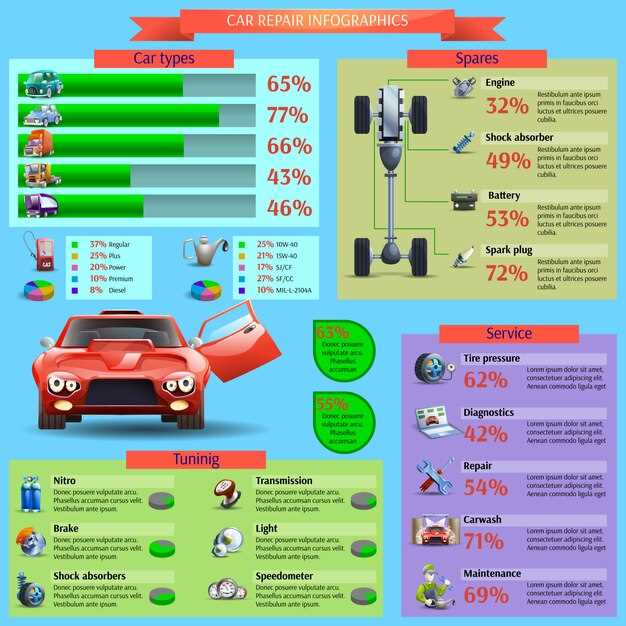
The world of motorsport is as diverse as it is thrilling, with each type of race car designed to excel under specific conditions and meet particular performance standards. This classification of race cars reveals an intricate tapestry of design, technology, and skill, where each vehicle serves a unique purpose in the competitive arena. Understanding the different types of race cars is essential not only for enthusiasts but also for those who wish to appreciate the nuances of racing dynamics.
From the roaring engines of Formula 1 cars that dominate the asphalt of grand prix circuits to the robust silhouettes of stock cars racing on oval tracks, each category showcases distinct features tailored to their racing environments. Comprehensive knowledge of these vehicles, including their engineering innovations and performance attributes, plays a crucial role in understanding what makes each race memorable.
This article will delve into the various types of race cars, examining their characteristics, capabilities, and the technological advancements that set them apart. Whether you’re a seasoned racing aficionado or a curious newcomer, this exploration will enhance your appreciation for the remarkable machines that thrill audiences around the globe.
Understanding the Differences Between Formula and Sports Cars

When it comes to race cars, the classification into various types helps enthusiasts and professionals alike appreciate the unique features and capabilities of each category. Two prominent types are Formula cars and Sports cars, each designed for different racing disciplines and purposes.
Formula cars, such as those used in Formula 1, are open-wheel vehicles engineered for high-performance racing on dedicated circuits. These cars prioritize aerodynamics, lightweight materials, and advanced technology, providing exceptional speed and handling. The design emphasizes downforce, allowing them to take corners at remarkable speeds. Formula cars are stripped down to reduce weight, often featuring a single-seat layout and an exposed wheel configuration, which contributes to their agility and responsiveness on the track.
On the other hand, Sports cars are typically closed-wheel vehicles designed for both racing and consumer markets. They are versatile, offering a blend of performance, comfort, and style. While sports cars can compete in various racing formats, including endurance races, they are often heavier than Formula cars due to additional features such as passenger seats and more complex aerodynamics. Sports cars prioritize balance and drivability, appealing to enthusiasts seeking an exhilarating driving experience on both the road and the track.
Another significant difference lies in the race formats these cars participate in. Formula racing is highly regulated with strict adherence to rules regarding design and technology, which fosters a competitive environment focused on engineering excellence. In contrast, sports car racing encompasses a broad range of events, including endurance races like the Le Mans 24 Hours, where strategy and reliability play crucial roles alongside speed.
In summary, while both Formula and Sports cars serve the purpose of racing, they cater to different audiences and events. Understanding their unique characteristics enhances appreciation for the diverse world of motorsports and the engineering marvels that drive it.
Analyzing the Impact of Aerodynamics on Race Car Performance
Aerodynamics plays a pivotal role in the classification of race cars, directly influencing their speed, stability, and handling. The design of a race car’s body affects how air flows around it, which can either enhance or inhibit performance on the track.
One crucial aspect of aerodynamics is drag reduction. A well-optimized shape minimizes air resistance, allowing cars to reach higher speeds with less power. This characteristic is particularly significant in high-speed racing environments where even slight improvements can lead to a decisive advantage. Teams focus on creating streamlined profiles, using computational fluid dynamics to analyze airflow and refine designs.
Lateral stability is another vital factor impacted by aerodynamics. Downforce, generated by features like wings and spoilers, pushes the car towards the track, improving tire grip and cornering ability. The balance between downforce and drag is essential; too much downforce can increase drag, while insufficient downforce can compromise traction, affecting overall performance.
The classification of race cars often includes considerations for aerodynamic enhancements. Formula 1 cars, for instance, utilize complex aerodynamic packages that include adjustable wings and diffusers, allowing teams to adapt to varying track conditions. In contrast, touring cars prioritize a balance between performance and manufacturability, leading to different aerodynamic solutions.
In summary, aerodynamics is a critical factor that influences the classification and performance of race cars. Effective aerodynamic design results in lower drag, enhanced downforce, and improved stability, all of which are essential for gaining a competitive edge on the racetrack.
Identifying Key Safety Features in High-Performance Race Vehicles

High-performance race cars are designed not only for speed and agility but also for safety, which is crucial given the inherent risks involved in motorsport. A comprehensive classification of safety features can be observed across various types of cars, emphasizing their unique approaches to protecting drivers. Understanding these key features is essential for both manufacturers and racers alike.
One of the primary safety elements in race vehicles is the roll cage, which provides structural integrity and helps to protect the driver during a rollover accident. This framework is typically made from high-strength materials and is engineered to absorb and distribute impact forces. In addition to the roll cage, many race cars are equipped with advanced seatbelt systems that often include harnesses with multiple anchor points to keep the driver securely in place during high-speed maneuvers.
Another critical feature is the use of fire suppression systems. These systems are designed to detect flames and extinguish them quickly, minimizing the risk of injury from fire. Drivers also benefit from flame-retardant suits and helmets, which are made from specialized materials that provide essential protection against extreme heat and flames in the event of an incident.
Moreover, high-performance race cars are equipped with advanced braking systems that enhance control. Carbon-carbon brakes are common in such vehicles, offering higher performance and heat resistance compared to traditional materials. This capability allows for sharper stops and improved handling, contributing to overall safety on the track.
The classification of safety features further extends to the implementation of electronic aids, such as traction control and electronic stability control. These technologies help maintain vehicle stability in challenging conditions, reducing the likelihood of accidents caused by loss of control.
Lastly, crash data acquisition systems are becoming increasingly prevalent in race cars, providing valuable information about crashes. Analyzing this data helps engineers improve safety designs and features in future models, ultimately leading to safer racing environments.
In conclusion, identifying and implementing key safety features in high-performance race vehicles is crucial for protecting drivers. The ongoing advancements in technology and engineering continue to enhance these features, ensuring that safety remains a top priority in motorsport.











